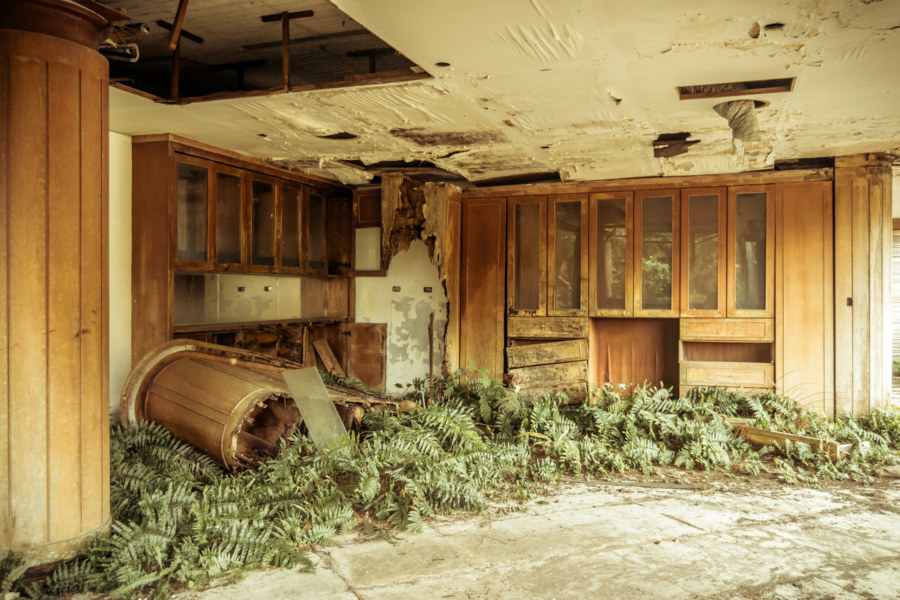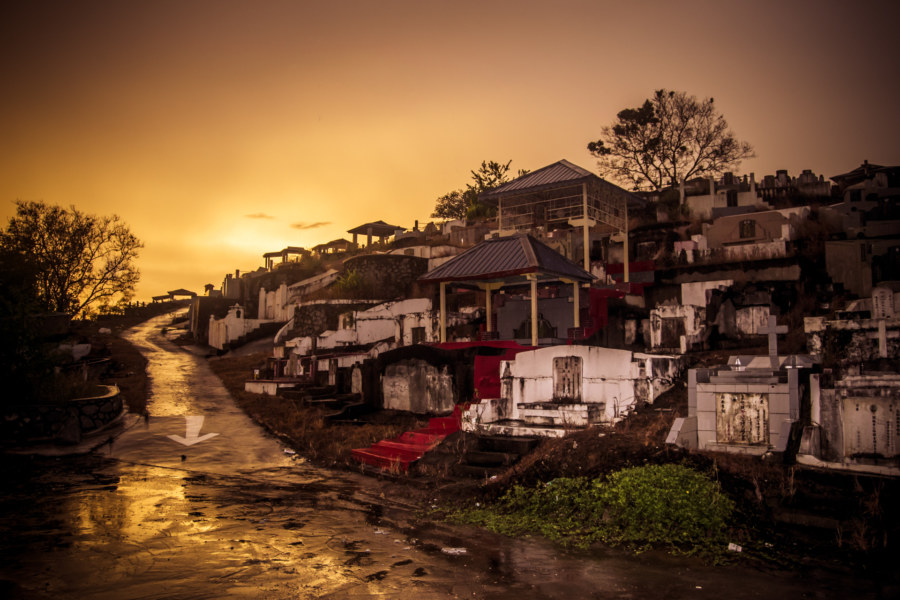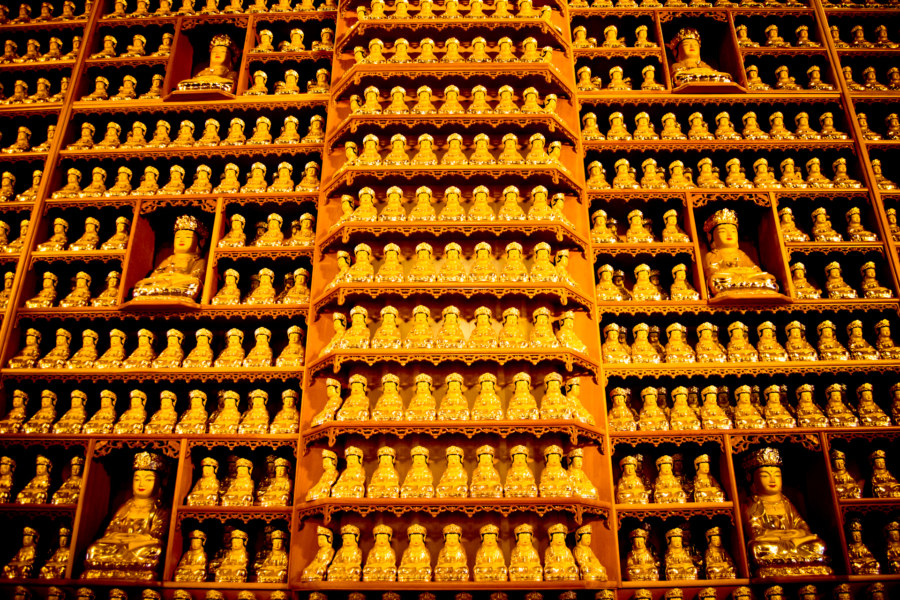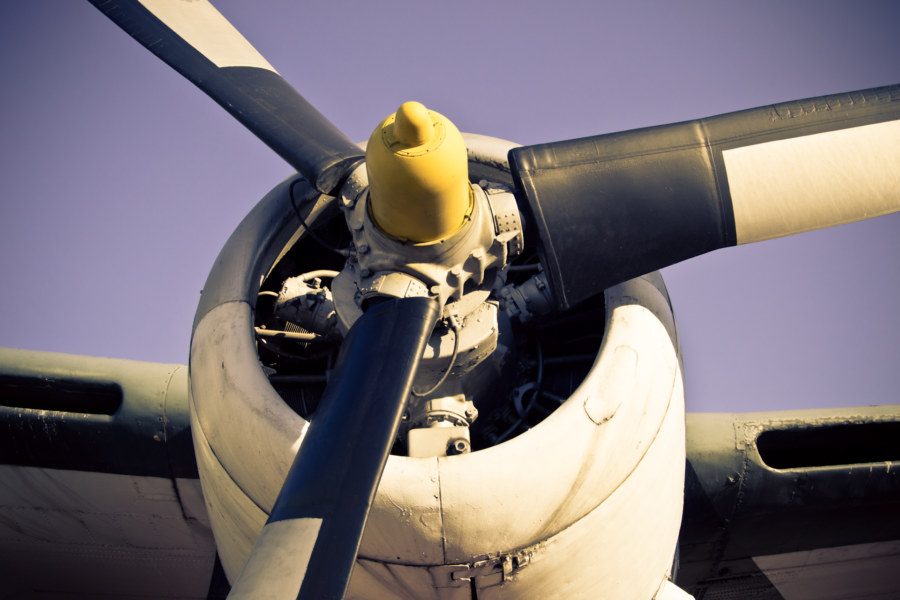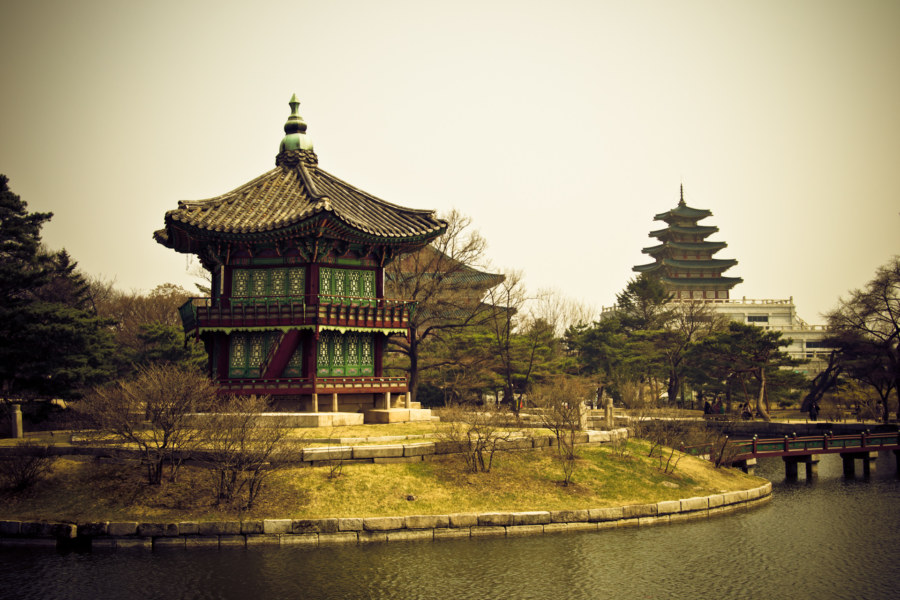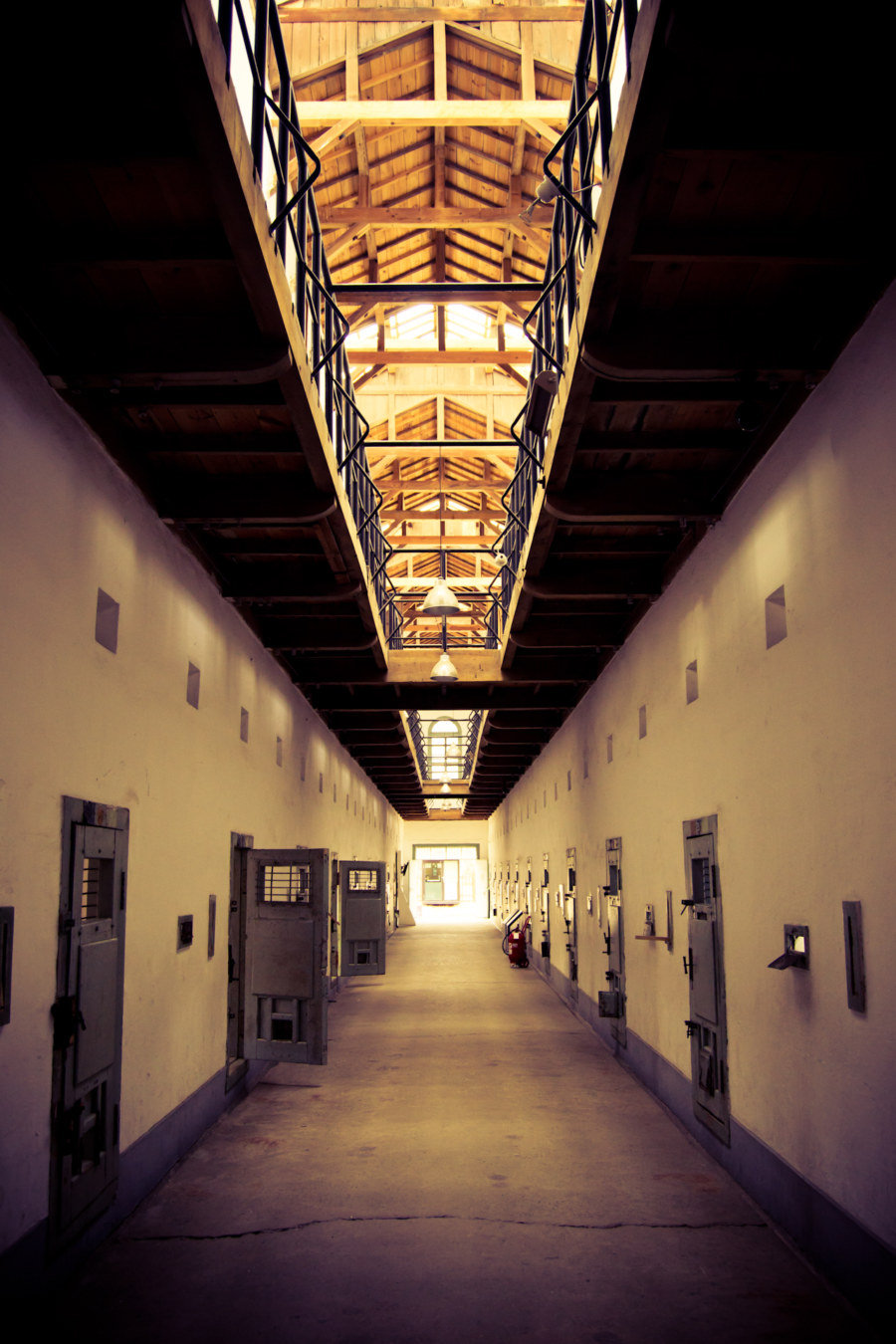I was out cycling through Bitan in Xindian one night when I noticed a big building with blown-out windows looming over Yongye Road (永業路). The skeletal outline of a collapsed rooftop against the umbral sky confirmed my suspicions: this building was abandoned. It was too dark to take a closer look that particular night but I vowed to return.
This category mainly features location-specific content about individual points of interest. These might be historic sites, tourist attractions, abandoned places, or something else constrained by geography.
Tuaran Chinese Cemetery
These photos were shot while touring an old Chinese cemetery in Kampung Bakut, a village just outside of Tuaran in the Malaysian state of Sabah. Many Hakka Chinese migrated to this area in the late 19th century, hence the need for a place formally known in Malay as Tanah Perkuburan Orang Cina Tuaran (Chinese: 斗亞蘭華人福壽山). It is a forlorn, neglected place: a hilltop encrusted with elaborate tombs in an elegant state of disrepair. Cemeteries are typically avoided by the local people, a consequence of the widely-held belief that anything to do with death will bring bad luck. Even so, these burial grounds are littered with rubbish and empty glue canisters—an indication that the cemetery entertains at least a few visitors now and then.
Bongeunsa Temple
Bongeunsa 봉은사 (Hangul: 봉은사; Hanja: 奉恩寺) is a Buddhist temple in the Gangnam (yes, that Gangnam) of Seoul immediately across from COEX Mall, supposedly one of the largest in Asia. Towering skyscrapers on the horizon are a stark reminder of the modernity outside the temple grounds. Inside, many of the structures show their age, particularly the antique bell house (depicted in the last photo below). Still, little remains of the original Bongeunsa. As with other historic sites in Seoul it has undergone many renovations and improvements over the years. The results are pleasant enough to walk around but one does not feel the weight of history in this place.
War Memorial of Korea
Here are a few photos from my visit to the War Memorial of Korea (Hangul: 전쟁기념관), a military history museum in Yongsandong, Seoul, not far from the American military base. It is strange to have a memorial for a war that isn’t over—but hey, what else would you call it?
Gyeongbokgung
Gyeongbokgung 경복궁 (Hanja: 景福宮) is a historic site in downtown Seoul, the site of an opulent palace built by the Joseon Dynasty. Few, if any, of the structures in the photographs below are original; the palace was more or less razed by the Japanese occupiers in the colonial period or during the Korean War. Nowadays it is a major tourist attraction and a curiously contrived window into traditional Korea.
Seodaemun Prison
Seodaemun Prison (Hangul: 서대문형무소) is not a happy place but my visit there was a tremendously educational experience. It housed thousands of political prisoners over the course of most of the 20th century—many of whom lost their lives here, either through neglect, overwork (it was also a forced labour camp), or by way of the “body removal tunnel”. A memorial to many of Seodaemun’s victims can be seen in the photos below.
